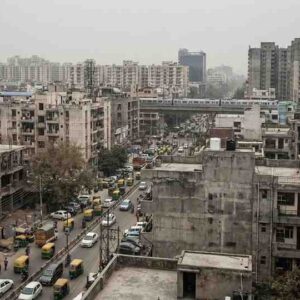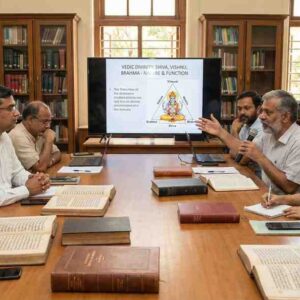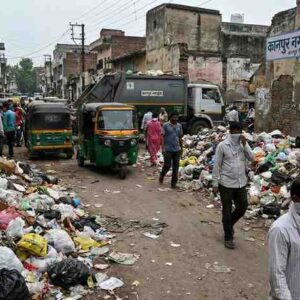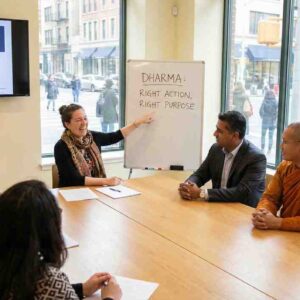Uttar Pradesh: A Crucible of Social Change
Uttar Pradesh (UP), India’s most populous state, has historically been a fertile ground for social movements fueled by dissent and guided by a quest for harmony. From the independence struggle to contemporary campaigns for social justice, UP has witnessed the interplay of conflicting philosophies that drive change. These movements reflect a dynamic spectrum of ideological differences—be it between tradition and modernity, caste hierarchies and equality, or religious harmony and polarization.
Philosophical Roots of Dissent in UP
1. Caste and Social Justice
- Ambedkarite Philosophy:
- Inspired by Dr. B.R. Ambedkar’s ideas, Dalit movements in UP challenge caste-based discrimination and demand equality and representation.
- Movements like the rise of the Bahujan Samaj Party (BSP) under Mayawati epitomize this struggle, leveraging dissent to secure rights for marginalized communities.
- Opposing Traditional Norms:
- Caste-based protests often clash with hierarchical philosophies rooted in the Manusmriti, which perpetuate social stratification.
2. Religious Harmony vs. Polarization
- Ganga-Jamuni Tehzeeb:
- This philosophy of cultural syncretism emphasizes coexistence between Hindus and Muslims, manifesting in shared traditions, festivals, and community rituals.
- Challenges to Harmony:
- The rise of communal politics has sparked dissent, with movements advocating for interfaith dialogue and opposing divisive narratives.
3. Gender Equality
- Feminist Movements:
- Campaigns like the anti-dowry movement and protests against gender violence highlight the fight for women’s rights, often inspired by modern feminist philosophies.
- These efforts frequently challenge patriarchal structures deeply rooted in religious and cultural traditions.
Harmony as a Counterbalance to Dissent
1. Community-Driven Solutions
- Panchayat Systems:
- Local governance structures often mediate disputes and foster harmony, blending traditional wisdom with modern justice.
- Interfaith Initiatives:
- Collaborative projects in Varanasi and Lucknow promote shared cultural practices, reinforcing the idea that harmony can coexist with dissent.
2. Shared Spaces for Expression
- Universities as Hotbeds of Ideological Exchange:
- Institutions like Aligarh Muslim University (AMU) and Banaras Hindu University (BHU) have historically hosted debates on caste, religion, and gender, allowing diverse philosophies to interact constructively.
3. Festivals and Cultural Symbols
- Cultural Unity:
- Events like Kumbh Mela and Muharram bring communities together, demonstrating how shared rituals can transcend differences.
Social Movements Shaping UP’s Society
1. Farmers’ Protests
- Economic vs. Traditional Philosophies:
- Recent farmer protests in Western UP reflect a clash between economic liberalization policies and traditional agrarian livelihoods.
- Impact:
- These movements have not only highlighted rural concerns but also fostered solidarity among diverse groups, transcending caste and religion.
2. Environmental Campaigns
- Local Activism:
- Movements against deforestation in the Terai region or pollution in the Ganga blend ecological philosophies with spiritual reverence for nature.
- Philosophical Divide:
- The tension between industrial development and sustainable practices drives these movements.
3. Anti-Corruption Protests
- Democratic Ideals:
- Movements like Anna Hazare’s campaign found resonance in UP, pushing for accountability and transparency in governance.
- Philosophical Implication:
- The protests reflect a deep belief in democracy as a tool for societal harmony, even as they challenge systemic corruption.
Challenges to Constructive Dissent
1. Political Exploitation
- Polarization:
- Dissent is often co-opted by political parties, turning genuine grievances into tools for electoral gains.
2. Suppression of Voices
- Lack of Freedom:
- Crackdowns on protests and dissenting voices stifle constructive dialogue, undermining the potential for harmony.
3. Fragmentation of Movements
- Lack of Unity:
- Divisions along caste, religion, or regional lines often weaken movements, reducing their effectiveness.
The Path Forward: Balancing Dissent and Harmony
1. Encouraging Dialogue
- Interfaith and Intercaste Platforms:
- Creating spaces for open discussions can help bridge divides and foster understanding.
2. Empowering Local Communities
- Grassroots Movements:
- Strengthen local governance structures to address concerns before they escalate into larger conflicts.
3. Promoting Education
- Civic Awareness:
- Educational programs that emphasize critical thinking and shared values can nurture informed dissent.
4. Supporting Peaceful Protest
- Legitimizing Movements:
- Protect the right to protest while ensuring that movements remain constructive and non-violent.
Conclusion: The Dual Forces of Change
Dissent and harmony are not opposing forces but complementary drivers of social progress in Uttar Pradesh. While dissent challenges injustices and pushes for reform, harmony ensures that these changes are inclusive and sustainable.
UP’s history demonstrates that its greatest achievements—whether in social justice, religious coexistence, or economic reforms—stem from the interplay of these two forces. By embracing both, the state can continue to evolve while staying true to its rich legacy of diversity and resilience.












